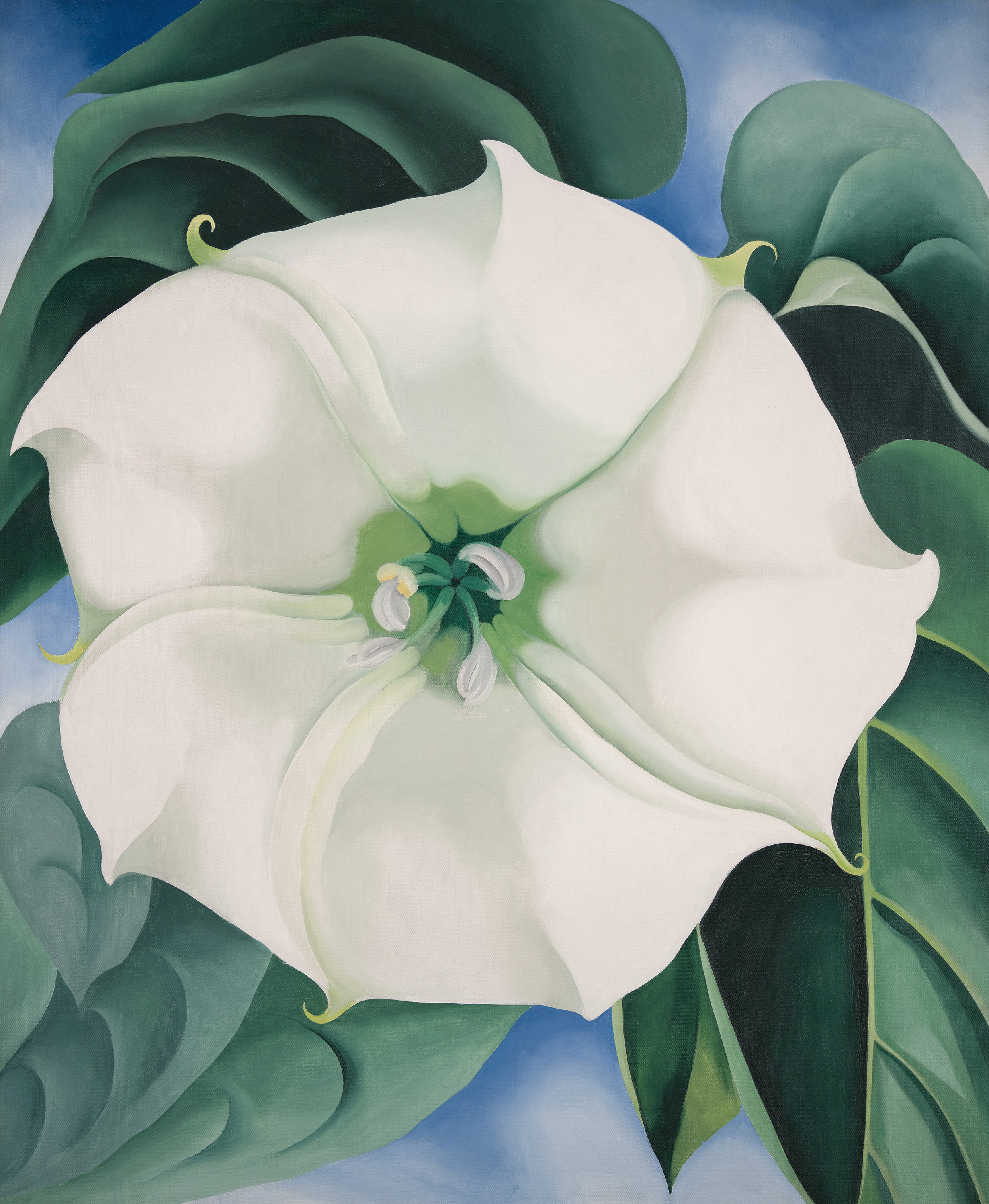
Georgia O’Keeffe, “Jimson Weed, White Flower No. 1,” 1932. Crystal Bridges Museum of American Art, Arkansas USA © 2016. Georgia O’Keeffe Museum/DACS, London. Photograph by Edward C. Robison III.
LONDON — One of the highlights of the major Georgia O’Keeffe (1887–1986) retrospective opening at Tate Modern this summer will be the celebrated flower painting, “Jimson Weed, White Flower No. 1 1932.” This well known painting is an important example of the artist’s investigations into still life, and particularly the flowers for which she is most famous.
The painting of a humble garden weed is being loaned to Tate Modern from the Crystal Bridges Mu-seum of American Art in Arkansas. This will be the first time the work is displayed outside the United States since being acquired by the museum in 2014. It is the most expensive painting sold at auction by a female artist.
The Jimson weed bloom is native to New Mexico and the focus O’Keeffe affords it in the painting re-flects her growing affinity with the region in the 1930s — an association that would continue through-out her lifetime. Being fond of this particular plant, she allowed Jimson weed to flourish around her patio at her home in Abiquiu and made it the subject of multiple works, each time presenting a new viewpoint. The frontal perspective on the flower in “Jimson Weed, White Flower No.1,” 1932 and the symmetry this gives the composition, makes it a particularly striking work in the series.
The painting reveals the profound influence O’Keeffe took from modernist photography – its concern with the study of form, use of close up or magnification and cropping – a practice that was influenced by her professional and personal relationship with husband and photographer Alfred Stieglitz (1865-1946), as well as her close friendships with a number of other photographers.
Achim Borchardt-Hume, Director of Exhibitions at Tate Modern, said: “We are delighted to be show-ing this iconic work by O’Keeffe for the first time in the UK for over 20 years… The exhibition offers a rare opportunity for European audiences to view O’Keeffe’s work in such depth and what better mo-ment to celebrate her influential career than 100 years after her debut and coinciding with the opening of the new Tate Modern.”
Rod Bigelow, Executive Director of Crystal Bridges Museum of American Art, said, “We consider this significant painting by Georgia O’Keeffe a treasured work in Crystal Bridges’ collection. We’re pleased to be able to share it with the Tate as a part of the O’Keeffe retrospective to offer a wide audience of museum visitors the opportunity to view and experience this painting.”
Widely recognized as a founding figure of American modernism, O’Keeffe gained a central place within the avant-garde art scene between the 1910s and the 1970s. Spanning the six decades in which O’Keeffe was at her most productive and featuring over 100 major works, the forthcoming exhibition at Tate Modern will chart the progression of her practice from her early abstract experiments to her late works from the 1950s and 1960s, aiming to dispel the clichés that persist about the artist and her painting.
Georgia O’Keeffe opens at Tate Modern July 6, curated by Tanya Barson, Curator, Tate Modern with Hannah Johnston, Assistant Curator, Tate Modern. The exhibition is organized by Tate Modern in col-laboration with Bank Austria Kunstforum, Vienna and the Art Gallery of Ontario, Toronto.
For information, www.tate.org.uk or +44 (0)20 7887 8888.

